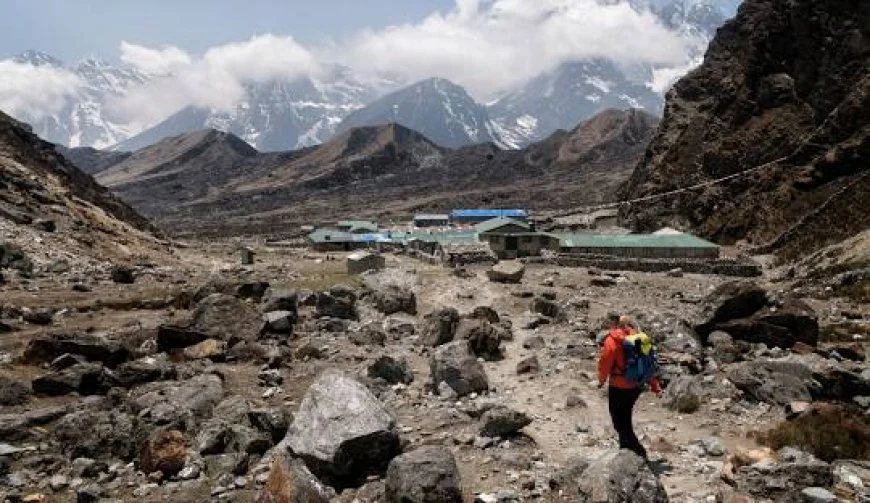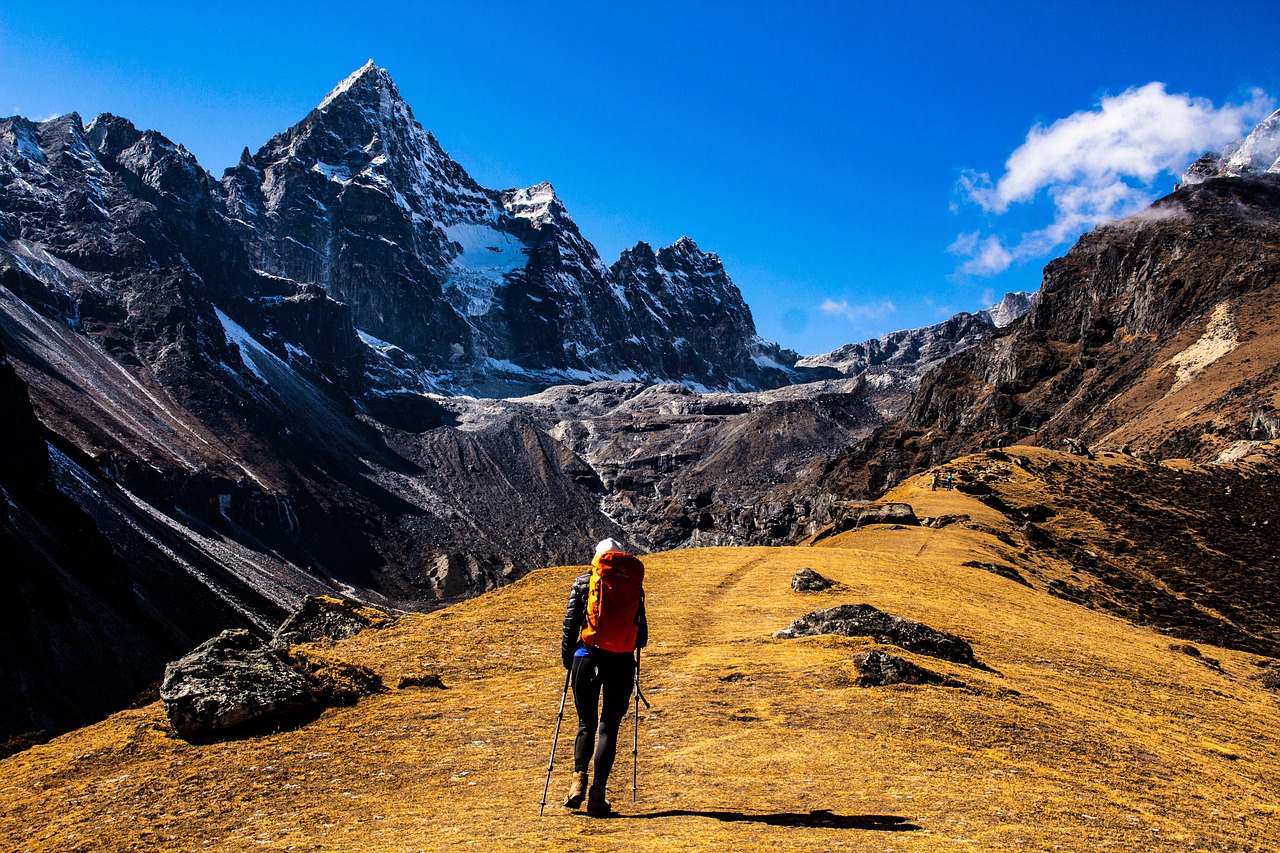
The Everest Base Camp Trek, often regarded as one of the most iconic and exhilarating treks in the world, offers adventurers a unique opportunity to experience the grandeur and mystique of Mount Everest, the highest peak on Earth. Nestled in the Khumbu region of Nepal, this trek takes you to the foot of Everest, offering an up-close view of its awe-inspiring beauty while allowing trekkers to immerse themselves in the local Sherpa culture and explore the spectacular Himalayan landscape.
In this article, we will explore the details of the Everest Base Camp Trek, including its significance, preparation, highlights, challenges, and practical advice for those planning this life-changing adventure.
The Significance of Everest Base Camp
Mount Everest, known as “Sagarmatha” in Nepali and “Chomolungma” in Tibetan, stands tall at 8,848.86 meters (29,031.7 feet). Climbing this monstrous peak is an aspiration for many mountaineers, but for most people, trekking to Everest Base Camp is a more accessible and equally exhilarating way to experience the grandeur of the Himalayas.
Everest Base Camp itself is situated at an altitude of 5,364 meters (17,598 feet) and is the starting point for mountaineers attempting to summit Everest. The trek to the base camp is a non-technical challenge, allowing trekkers from all walks of life to reach an altitude that only seasoned mountaineers would dare to climb.
However, the trek is not just about reaching a destination—it’s about the journey itself. The Everest Base Camp Trek is a cultural, physical, and spiritual exploration that allows trekkers to experience the landscapes, people, and history of the region. The trek winds through picturesque villages, Buddhist monasteries, ancient Sherpa settlements, and forests of rhododendron and pine, all while offering magnificent views of some of the world’s most famous peaks.
Overview of the Everest Base Camp Trek
Trek Difficulty and Duration
The Everest Base Camp Trek is a moderately difficult trek that typically takes 12 to 14 days to complete, depending on the pace and acclimatization needs. The trek’s difficulty is primarily due to the altitude, as trekkers will reach over 5,000 meters. Proper acclimatization is crucial to reduce the risks of altitude sickness, which is why the trek involves gradual ascents and rest days.
Despite its difficulty, the Everest Base Camp Trek is achievable for most people with a reasonable level of fitness. The trek does not require any technical climbing skills, but it does involve steep ascents, long hours of walking, and navigating rocky and uneven terrain.
The total distance of the trek is about 130 kilometers (80 miles) round trip, with an elevation gain of around 2,000 meters (6,600 feet). The path to Everest Base Camp passes through diverse terrain, from lush valleys and rhododendron forests to rugged mountain paths and rocky moraines.
Starting Point: Lukla
The trek typically begins in Lukla, a small town located at an altitude of 2,860 meters (9,383 feet). To reach Lukla, trekkers usually fly from Kathmandu, the capital of Nepal, on a 30-minute flight over the stunning Himalayan landscape. The Lukla airport, one of the most thrilling airports in the world, has a short runway and is perched on a steep incline, making it an exhilarating experience for those arriving or departing.
Upon arrival in Lukla, trekkers begin their journey with a short walk to Phakding, a village located about 3.5 kilometers (2 miles) from Lukla. From there, the journey continues through small villages, teahouses, and scenic trails.
The Route to Everest Base Camp
The traditional Everest Base Camp Trek follows a specific route, gradually ascending through several key villages:
- Phakding to Namche Bazaar (3,440 meters / 11,290 feet): The trek starts with a relatively easy hike to Namche Bazaar, a vibrant Sherpa town that is also the gateway to the Everest region. Along the way, trekkers cross suspension bridges over the Dudh Koshi River and pass through forests of pine and rhododendron. Namche Bazaar is the first place where trekkers can acclimatize to the altitude and enjoy local cuisine, shopping, and stunning views of the surrounding peaks.
- Namche Bazaar to Tengboche (3,860 meters / 12,664 feet): The trail continues to Tengboche, a village famous for its beautiful monastery, Tengboche Monastery. The trek offers breathtaking views of Everest, Lhotse, and Ama Dablam, one of the most recognizable peaks in the region. Tengboche is an excellent spot to visit a Buddhist monastery and participate in prayer ceremonies if trekkers time their visit right.
- Tengboche to Dingboche (4,410 meters / 14,470 feet): The journey from Tengboche to Dingboche involves traversing alpine meadows and climbing steep hills. Dingboche is a peaceful settlement with outstanding views of the surrounding mountains. It’s also another critical acclimatization stop for trekkers before they continue their ascent toward Everest Base Camp.
- Dingboche to Lobuche (4,940 meters / 16,210 feet): The trek from Dingboche to Lobuche is a challenging one, as the altitude continues to rise. The views of Everest, Nuptse, and other prominent peaks become even more mesmerizing. Lobuche is a small settlement with only a handful of teahouses, where trekkers can rest and prepare for the final stretch to Everest Base Camp.
- Lobuche to Gorak Shep (5,170 meters / 16,962 feet): From Lobuche, trekkers continue to Gorak Shep, a tiny settlement located near the base of the Khumbu Glacier. This is the last stop before reaching Everest Base Camp. The path from Gorak Shep to Everest Base Camp involves walking across rocky terrain and glacial moraines, with magnificent views of the surrounding peaks.
- Gorak Shep to Everest Base Camp (5,364 meters / 17,598 feet): After a challenging hike from Gorak Shep, trekkers finally reach Everest Base Camp. The sight of Everest towering above, along with the surreal landscape of ice and rock, is a humbling experience. Though trekkers cannot summit Everest from the base camp, the experience of standing in the shadow of the highest peak in the world is a moment of triumph for many.
The Return Journey
After reaching Everest Base Camp, most trekkers head back to Lukla by retracing their steps. The return journey tends to be faster since the descent is easier and more manageable. However, trekkers must still be mindful of their altitude and health, taking time to acclimatize if necessary.
Highlights of the Everest Base Camp Trek
- Stunning Views of the Himalayas: Throughout the trek, trekkers are treated to breathtaking views of some of the tallest and most famous peaks in the world, including Mount Everest, Lhotse, Makalu, Ama Dablam, and Cho Oyu. These views are especially dramatic at sunrise and sunset when the peaks are bathed in golden light.
- Sherpa Culture: The Sherpa people, known for their mountaineering skills and resilience, are an integral part of the Everest Base Camp Trek. Trekkers will have the chance to interact with local Sherpas, visit Buddhist monasteries, and learn about their rich traditions, including their distinctive Tibetan-influenced culture, prayer flags, and religious rituals.
- Tengboche Monastery: One of the key cultural highlights of the trek is Tengboche Monastery, a spiritual center for the Sherpa people. The monastery is beautifully situated with panoramic views of Everest and other peaks. Visitors can witness the peaceful prayers and ceremonies that take place here, adding a spiritual dimension to the trek.
- Khumbu Icefall: While trekking towards Everest Base Camp, trekkers pass by the Khumbu Icefall, one of the most dangerous and visually striking features of Everest’s south face. This vast field of ice and jagged crevasses serves as the primary route for mountaineers attempting to summit Everest.
- The Khumbu Glacier: The Khumbu Glacier is one of the largest glaciers in Nepal, and trekkers will walk alongside it as they approach Everest Base Camp. The glacier provides a dramatic backdrop to the rugged terrain and adds to the surreal atmosphere of the trek.
Challenges of the Everest Base Camp Trek
- Altitude Sickness: The most significant challenge of the Everest Base Camp Trek is altitude sickness. As trekkers ascend to higher altitudes, the oxygen levels decrease, which can cause symptoms such as headache, nausea, and dizziness. To minimize the risk of altitude sickness, trekkers must take rest days for acclimatization and avoid rushing the ascent.
- Weather Conditions: The weather in the Himalayas can be unpredictable, with temperatures dropping significantly at higher altitudes. Snowstorms, strong winds, and rain can occur unexpectedly, especially during the winter and monsoon seasons. Trekkers should be prepared for all weather conditions.
- Physical Endurance: The trek involves long days of walking, often over uneven terrain, and the altitude can make breathing more difficult. Trekkers need to be in good physical condition and mentally prepared for the demands of the journey.
Preparing for the Everest Base Camp Trek
- Physical Preparation: To complete the trek, training beforehand is essential. Focus on building endurance, strength, and stamina through regular hikes, cardio exercises, and leg workouts.
- Packing Essentials: Key items to pack include trekking boots, a down jacket, a sleeping bag for cold temperatures, water bottles, sun protection, and a first aid kit. Don’t forget trekking poles, a camera, and snacks.
- Travel Insurance: It is highly recommended to have comprehensive travel insurance that covers medical emergencies, evacuation, and trip cancellations.
- Permits and Documentation: Trekkers must obtain two main permits: the TIMS (Trekkers’ Information Management System) card and the Sagarmatha National Park entry permit. These can be acquired in Kathmandu or through your trekking agency.
Conclusion
The Everest Base Camp Trek is more than just a physical challenge; it’s a profound journey through breathtaking landscapes, rich cultural heritage, and personal discovery. Whether you’re drawn by the allure of Mount Everest or the desire to experience the beauty of the Himalayas, the trek offers something for every adventurer. Despite the challenges, the rewards are immeasurable—standing at the base of the world’s highest peak, surrounded by towering mountains and rich history, is an experience that will stay with you for a lifetime.
Connect to Himalayan Friendly
Himalayan Friendly (Pvt) Ltd.. is an authentic local trekking company based in Kathmandu, Nepal, specializing in multi-day tours, treks, climbing and other related activities for solo travelers and private groups. You can contact us at
Gmail Address : himalayanfriendly@gmail.com
Or Via WhatsApp at +24/7 Support :+9779843245647
+977 010544082


